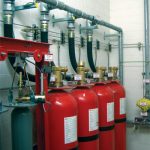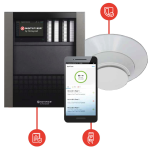Similarities Between FM 200 and NOVEC 1230 Fire Protection
Both FM 200 and NOVEC 1230 are clean agents used for fire suppression in occupied settings that are sensitive to water. They are both considered halon replacements that are discharged within ten seconds as a non-toxic gas, suitable for Class A, B, and C fire hazards. NOVEC 1230 has been replacing FM 200 systems, here’s…

